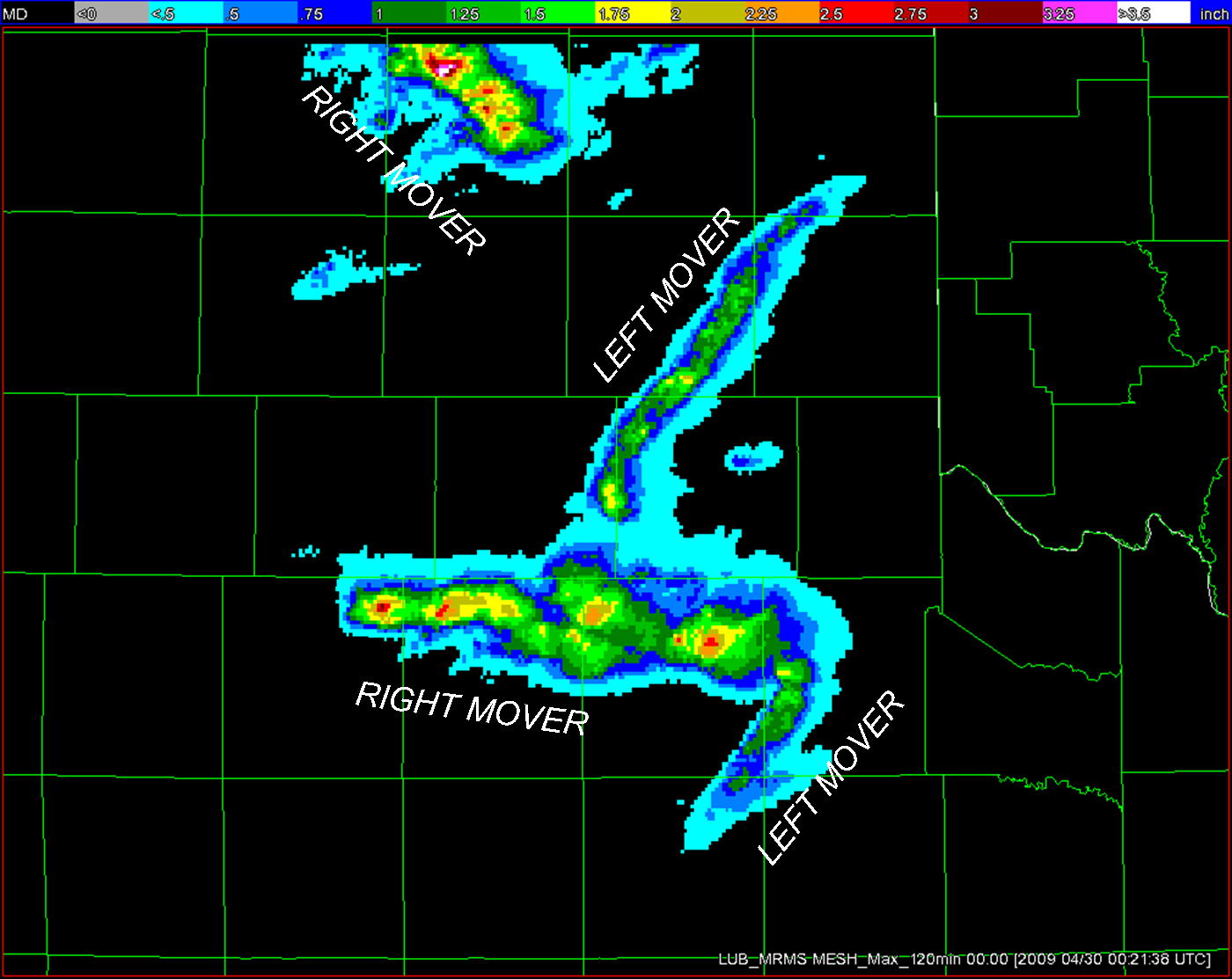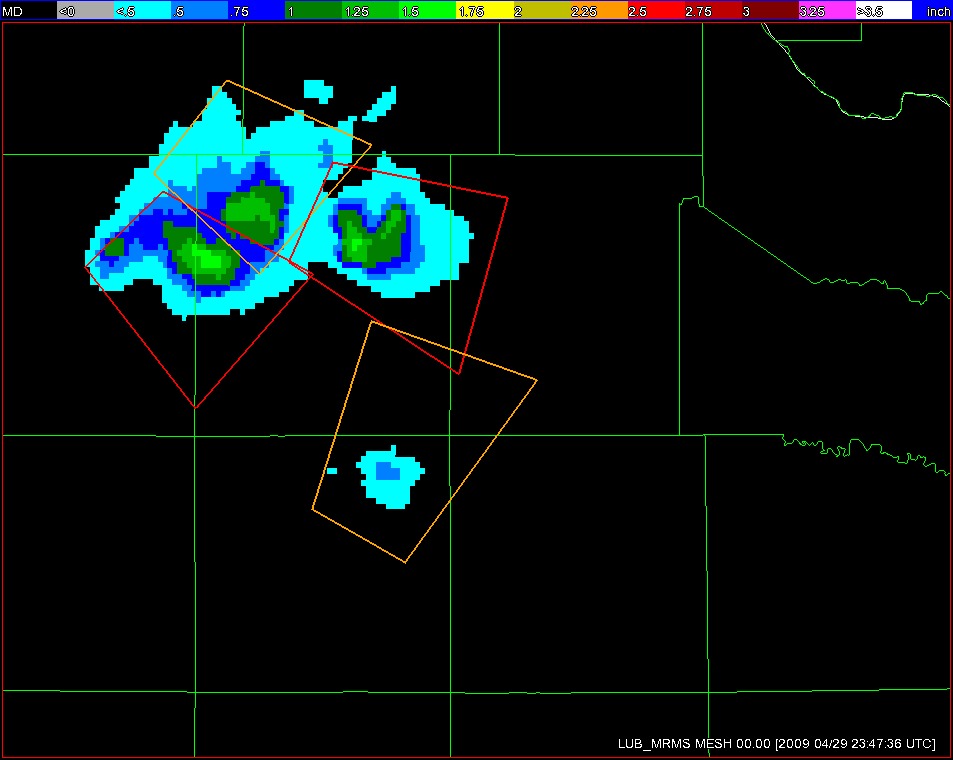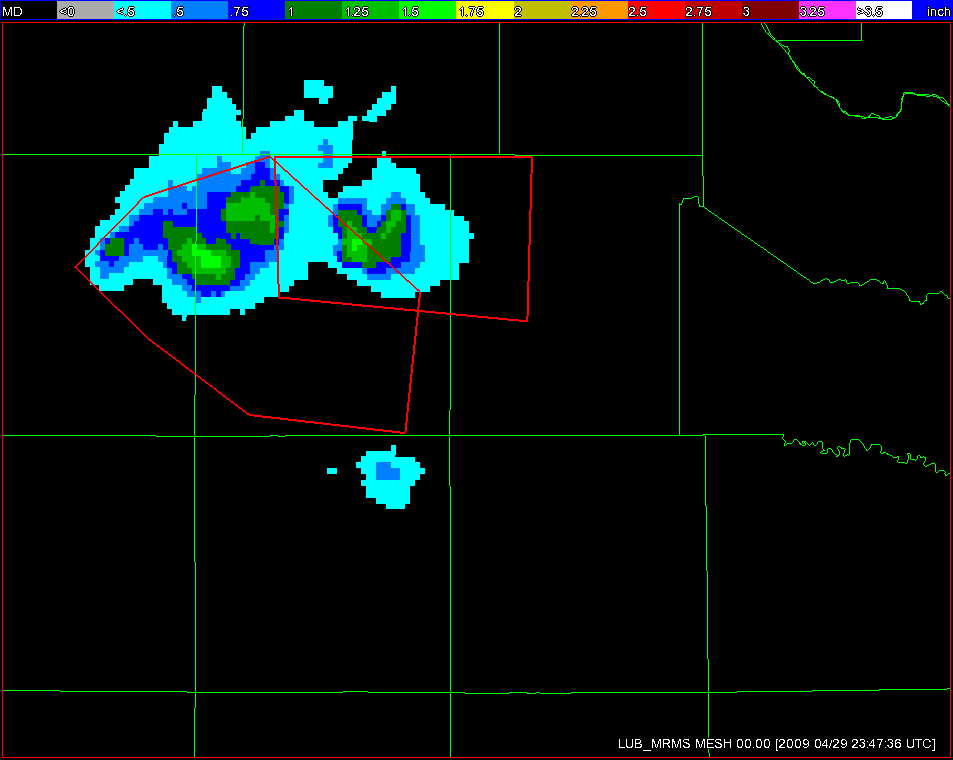The forecasters began the day by evaluating the 10 Feb 2009 case using the Lightning Mapping Array (LMA). Some comments included: coupling the data with the more-familiar NLDN (cloud-to-ground data) help with the analysis; rapid-update of data helped with updraft identification versus just 88D data; the units were difficult to understand (flashes/km^2/s); Observed the “dipole effect” on some of the storms; saw potential value for convective winter precipitation, aviation interests, and transitions from severe to heavy rain.
For the evening IOP, we worked a pretty active event in the southeast Texas Panhandle just east of Lubbock today evaluating the multi-radar/sensor algorithms and issuing experimental warnings using AWIPS. There were a number of supercell storms, one which produced several significant tornadoes. Large hail and damaging winds were also reported, including a nice example of a left-moving storm which created a hail swath who’s movement was contrary to the rest of the day’s storms.
Figure 1. MESH tracks, with left and right moving storms annotated.
Once again, the multi-radar MESH and MESH swaths were very useful for diagnosing the severity and for the orientation of the warning polygon cones, which appeared more “storm-based” than the official NWS warning polygons. The forecasters felt more comfortable with the MRMS products today since they already had a day of experience with them, and felt their lead times were improved. Noted that the MESH estimates on the left-mover were about 50% of the reported hail size – this same observation has also been made by the NSSL researchers. The other hail diagnostic parameters appeared to indicate smaller hail than was observed with the left-mover. There was a recommendation to be able to overlay the MRMS data as contours over the base single-radar data.
FIgure 2a. EWP-generated warning polygons.
FIgure 2b. NWS-generated warning polygons.
The rotation tracks products were also useful for the diagnosis of the tornado potential, and they also aided in the placement of the polygon cones, however a lack of “threshold guidance” was mentioned. Something like the WDTB Tornado Warning Guidance statistics for the LLSD algorithms should be considered. It was again commented that anticyclonic rotation tracks for the left-moving storms would be useful. In addition, “mouse-over” trends, as well as time-height trends of the MR azimuthal shear products could be useful.
Greg Stumpf (EWP Weekly Coordinator, 27 Apr – 1 May 2009)



